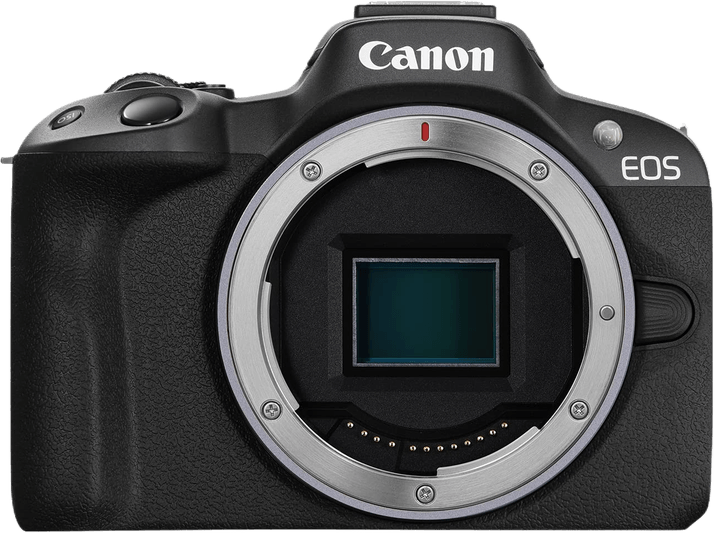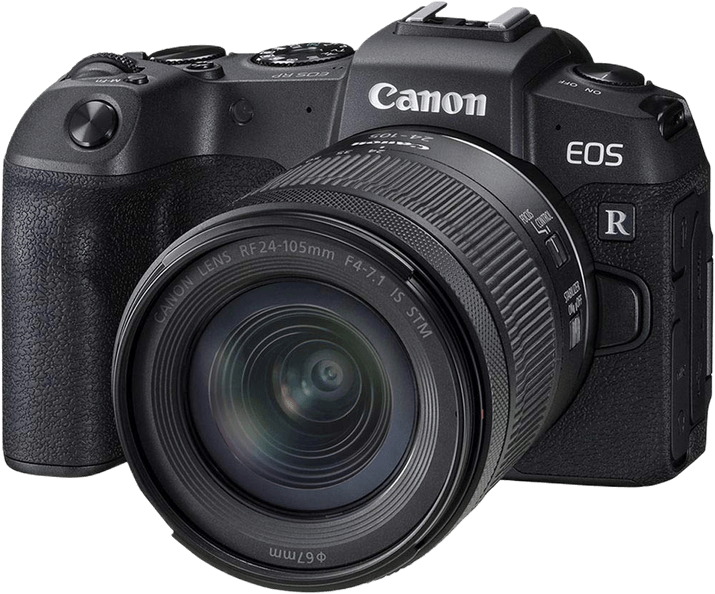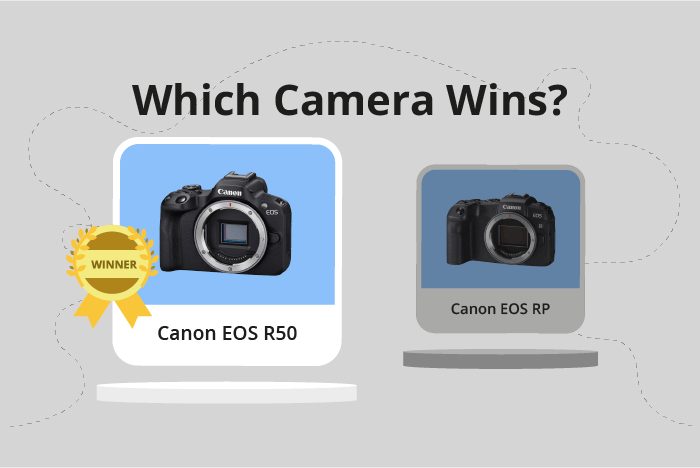Canon EOS R50 vs EOS RP Comparison
Canon EOS R50

Canon EOS RP

The Canon EOS R50 emerges as the winner with a score of 70/100, while the Canon EOS RP scores 65/100. Both cameras are mirrorless, with the R50 being released in 2023 and the RP in 2019. They share similar dimensions, but the R50 is lighter at 375g compared to the RP’s 440g.
The R50 stands out with its lower launch price of $679, making it more affordable than the RP, which was priced at $1300 upon release. The R50 also boasts a more compact design, measuring 116 x 86 x 69mm, whereas the RP measures 133 x 85 x 70mm.
Though the RP has a higher launch price and is slightly larger, it still delivers quality performance, earning a respectable score of 65/100. This shows that the RP is not completely outperformed by the newer R50.
Taking these specifications into account, the Canon EOS R50 is the better option due to its affordability, compact design, and higher score. However, the Canon EOS RP remains a solid choice for those seeking a reliable mirrorless camera.
Canon EOS R50 vs EOS RP Overview and Optics
The Canon EOS R50 outperforms the Canon EOS RP in optics with a score of 73/100 compared to 67/100. Both cameras share common specifications, such as CMOS sensor type, Canon RF lens mount, and the absence of image stabilization. Despite these similarities, there are several factors that contribute to the R50’s higher score.
The EOS R50’s advantages include a faster shooting speed of 12 frames per second, compared to the RP’s 5 frames per second. This allows the R50 to capture fast-moving subjects more effectively. Additionally, the R50 features a Digic X processor, which results in better image processing and overall performance compared to the RP’s Digic 8 processor. The R50 also boasts a higher DXOMARK score for the sensor at 94, as opposed to the RP’s 85, indicating superior image quality and low-light performance.
On the other hand, the EOS RP has a slightly higher megapixel count at 26, compared to the R50’s 24. This difference in resolution can provide more detailed images under optimal conditions. However, the R50’s other advantages outweigh this single benefit.
The R50’s APS-C sensor size, while smaller than the RP’s full-frame sensor, is not necessarily a disadvantage. The smaller sensor size can offer greater depth of field and works well with a variety of lenses. Meanwhile, the RP’s full-frame sensor may provide improved image quality in certain situations but may also require more expensive lenses.
Considering the factors mentioned, the Canon EOS R50 is the better option for those seeking superior optics performance, faster shooting speeds, and better image processing. The Canon EOS RP, while offering a slightly higher resolution, falls behind in other aspects, making it less competitive in the optics department.
Canon EOS R50 vs EOS RP Video Performance
The Canon EOS R50 outperforms the Canon EOS RP in video capabilities, scoring 91/100 compared to the RP’s 70/100. Both cameras share some common video specifications, such as a maximum video resolution of 4K and maximum video dimensions of 3840 x 2160. Additionally, both cameras have time-lapse functionality built in.
The R50’s superior video score is primarily due to its higher maximum video frame rate of 120fps, which is significantly better than the RP’s 25fps. This difference allows the R50 to capture smoother and more detailed slow-motion footage, making it a more suitable choice for videographers who require high-quality, high-speed video recording.
While the Canon EOS RP falls short in terms of maximum video frame rate, it still offers 4K video resolution and time-lapse functionality, making it a capable camera for casual video recording or for those who do not require high frame rates for their projects.
Taking into consideration the video capabilities of both cameras, the Canon EOS R50 is the clear winner for those seeking advanced video features and higher frame rates. The R50’s 120fps capability makes it a more versatile camera for various video projects, from capturing fast-paced action to creating stunning slow-motion sequences. On the other hand, the Canon EOS RP remains a solid option for those who prioritize 4K resolution and time-lapse functionality, but do not need the higher frame rates offered by the R50.
Canon EOS R50 vs EOS RP Features and Benefits
The Canon EOS R50 outperforms the Canon EOS RP in features, scoring 72/100 compared to the RP’s 70/100. Both cameras share several specifications, including a 3-inch screen, touchscreen functionality, flip screen, GPS absence, WIFI, and Bluetooth connectivity.
The R50’s superiority lies in its screen resolution, boasting 1,620,000 dots compared to the RP’s 1,040,000 dots. This difference results in a clearer and more detailed display, enhancing the user experience and facilitating more accurate image review and composition.
While the EOS RP falls short in screen resolution, it still has strong features. Its touchscreen and flip screen allow for easy navigation and versatile shooting angles, while the WIFI and Bluetooth capabilities enable effortless sharing and remote control. Despite its lower score, the RP remains a reliable and user-friendly camera.
Considering the features of both cameras, the Canon EOS R50 stands as the better option with its higher screen resolution, offering an improved user experience. The EOS RP, though slightly inferior, remains a solid choice with its shared specifications and user-friendly design. Ultimately, photographers must weigh the importance of screen resolution against their specific needs and preferences when choosing between these two cameras.
Canon EOS R50 vs EOS RP Storage and Battery
The Canon EOS R50 outperforms the Canon EOS RP in storage and battery, scoring 35/100 compared to the RP’s 29/100. Both cameras share similarities in storage options, featuring a single memory card slot and accepting SD, SDHC, and SDXC cards. However, the R50 is compatible with both UHS-I and II cards, while the RP only supports UHS-II cards.
The R50’s advantage lies in its superior battery life, offering 370 shots per charge compared to the RP’s 250 shots. Both cameras use the same LP-E17 battery type and have USB charging capabilities. The extended battery life of the R50 makes it a more reliable choice for longer shooting sessions or situations where charging is not easily accessible.
The EOS RP’s compatibility with UHS-II cards provides faster read and write speeds, which can be beneficial for certain applications. However, this advantage is not enough to outweigh the R50’s overall better storage and battery performance.
In a direct comparison of storage and battery capabilities, the Canon EOS R50 emerges as the better choice, primarily due to its longer battery life and broader memory card compatibility.
Canon EOS R50 vs EOS RP – Our Verdict
Are you still undecided about which camera is right for you? Have a look at these popular comparisons that feature the Canon EOS R50 or the Canon EOS RP:

